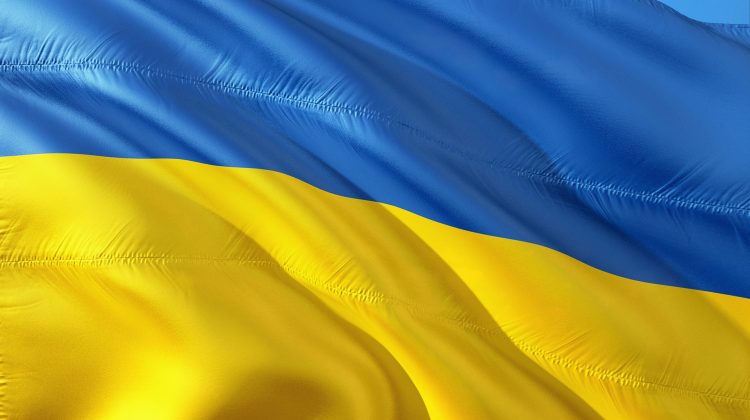
Ukraine: how an armed conflict could play out
Talks between Russia and the west have failed. Moscow has described the situation in Ukraine as “intolerable” and “a matter of life or death”. The US president, Joe Biden, has predicted the Kremlin “will move in” to Ukraine.
The impasse was reached when the Russian president, Vladimir Putin, insisted that the armed conflict in eastern Ukraine “looks like genocide”, adding massive pressure to his diplomatic demands. Russia insists it is prepared to deploy unspecified but alarming sounding “military-technical” means to pursue its ends.
The signals are more than clear: after annexing Crimea in 2014 and sponsoring separatist movements in the Donbas, in the country’s east, Moscow is directly threatening a third incursion into Ukraine’s territorial sovereignty, massing troops on the Ukrainian border and also in Belarus, officially for “joint exercises”.
Beyond Ukraine, Russia is putting pressure on Nato and the EU, and attempting to change the international order with this latest round of power politics. Is Moscow bluffing – or is an escalated military conflict likely in Ukraine? If so, what are the chances that Kyiv can resist its more powerful neighbour?
Pressure on Kyiv
A concerted campaign of disinformation deployed through Russian-language media aims to foment unrest in Ukraine. But eight years of war have considerably diminished the power of pro-Russian propaganda and Kyiv took further steps last year by banning pro-Russian media outlets.
Ukraine’s security services have also revealed that several thousand cyberattacks have been conducted from occupied Crimea since 2014. In mid-January, a message calling on Ukrainians to “be afraid and expect the worst” – purporting to be from Poland, one of Ukraine’s strongest supporters – was revealed by Ukraine’s information ministry to have probably been devised by Russia.
Energy security is another important part of this crisis. Moscow’s plans for Nord Stream 2 – a pipeline which is supposed to directly reach Germany through the Baltic Sea – could deny energy to Ukraine, which has already lost control of its coal deposits in the conflicted Donbas. On top of that, Ukraine could lose transit fees equivalent to approximately 4% of its GDP, or US$7 billion (£5.1 billion).
But these are covert measures which must fly under the radar. The fear is that Moscow is backing itself into a diplomatic corner where the use of force is its only way to remain credible.
Military scenarios
Russia has built up sufficient military resources to penetrate into Ukrainian territory. But it’s unlikely to be able to take the whole country and, more importantly, hold it for any significant period, given the prospects of fierce armed resistance from Ukraine. But it has a number of options from which to launch a measured incursion.
East: Russia could easily launch a massive operation from the eastern province of Donbas where it is supporting local militias. The main part of its military build-up is in this area. The problem is that the main cities that Moscow could attempt to seize, Kharkiv and Dnipro, are heavily populated and would be difficult to capture occupy.
South: The Black Sea territories, or Prichernomorie, would be a tempting target for Russian strategists. Seizing this area would cut Ukraine off from its access to the sea and connect Russian forces from Donbas to Transnistria – a Russian-occupied region of Moldova, to the west of Ukraine.
Russia could launch its eastern forces as well as pre-positioned troops in Crimea. Analysts indicate that the coastal defences to the west of Crimea are quite exposed. But Russia would need to seize the cities of Marioupol, in the east, and Odessa, in the west, where the population would most likely strenuously resist Russian occupation.
North: Kyiv, Ukraine’s capital, is less than 100km from the border with Belarus, where Russia has troops conducting joint exercises. Belarus’s president, Alexander Lukashenko – an autocrat who holds on to power thanks to Moscow’s support – recently declared that his country “won’t stand aside if war breaks out”.
West: Perhaps the most surprising direction from which a new invasion of Ukraine could come. The Pentagon recently indicated concerns of a Kremlin false-flag operation coming from Transnistria – a Russian-speaking region of Moldova where Moscow has kept troops since the collapse of the Soviet Union.
Is Ukraine ready to resist?
For eight years, Kyiv has been fighting in the east of the country, beefing up its military and preparing its population to resist. But military sources are gloomy about the prospect of being able to resist for much longer than a week without the help of western allies.
Air defences are weak, but Ukraine has other assets, such as drones provided by Turkey as well as new anti-tank missiles provided by the US and the UK, with the assistance of trainers. Ukraine has also developed its own missile, which is proving effective in the field.
As well as its regular troops, Ukraine has its national guard, a sort of armed national police force. Backed by significant investments and advanced weaponry, it could act as a rearguard against paratroopers or special forces infiltrations.
Meanwhile, Ukraine’s defence battalions now span the whole territory, following the National Resistance Act which entered into force this month. These are civilian units, military trained to use guerrilla tactics against occupying forces.
The Ukrainian population has also been mobilizing in support of the troops since the seizure of Crimea and the war in Donbas. And according to a poll taken in December 2021 by the Kyiv International Institute of Sociology, 58% of Ukrainian men and almost 13% of women declared that they are ready to take up arms. A further 17% and 25% more said they would resist through other means.
In what would be a classic case of asymmetrical warfare, resistance from Ukraine’s population could therefore prove a serious thorn in Moscow’s side.
Julien Théron, Lecturer, Conflict and Security Studies, Sciences Po
This article is republished from The Conversation under a Creative Commons license. Read the original article.
